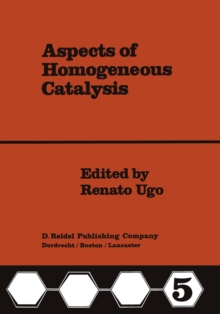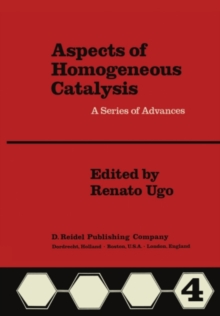
Aspects of Homogeneous Catalysis : A Series of Advances Paperback / softback
Edited by R. Ugo
Part of the Aspects of Homogeneous Catalysis series
Paperback / softback
Description
In recent years, the liquid phase oxidation of organic substrates using transition metal compounds as catalysts has become a profitable means of obtaining industrially important chemicals.
Millions of tons of valuable petrochemicals are produced in this manner annually [1].
Typical examples of such processes are the production of vinyl acetate or acetaldehyde via the Wacker process, equations (1) and (2); the Mid Century process for the oxidation of methyl aromatics, such as p-xylene to tereph thalic acid, equation (3); and the production of propylene oxide from propylene using alkyl hydroperoxides, equation (4).
PdCI , CuCI 2 2 (1) CH2 = CH2 + 1/2 O2 -H 0 ~ CH3CHO 2 (2) Co(OAcjz ~ (3) (4) The vast majority of liquid phase transition metal catalyzed oxidations of organic compounds fall into these three broad categories: (a) free radical autoxidation reactions, (b) reactions involving nucleophilic attack on coordinated substrate such as the Wacker process, or (c) metal catalyzed reactions of organic substrates with hydroperoxides.
Of these three classes of oxidations only the first represents the actual interaction of dioxygen with an organic substrate.
The function of oxygen in the Wacker process is simply to re-oxidize the catalyst after each cycle [2].
Information
-
Item not Available
- Format:Paperback / softback
- Pages:249 pages, 249 p.
- Publisher:Springer
- Publication Date:09/10/2011
- Category:
- ISBN:9789401012010
Information
-
Item not Available
- Format:Paperback / softback
- Pages:249 pages, 249 p.
- Publisher:Springer
- Publication Date:09/10/2011
- Category:
- ISBN:9789401012010










